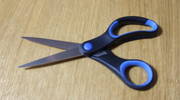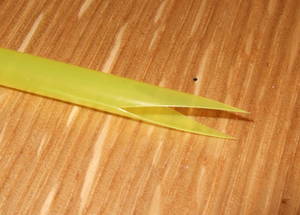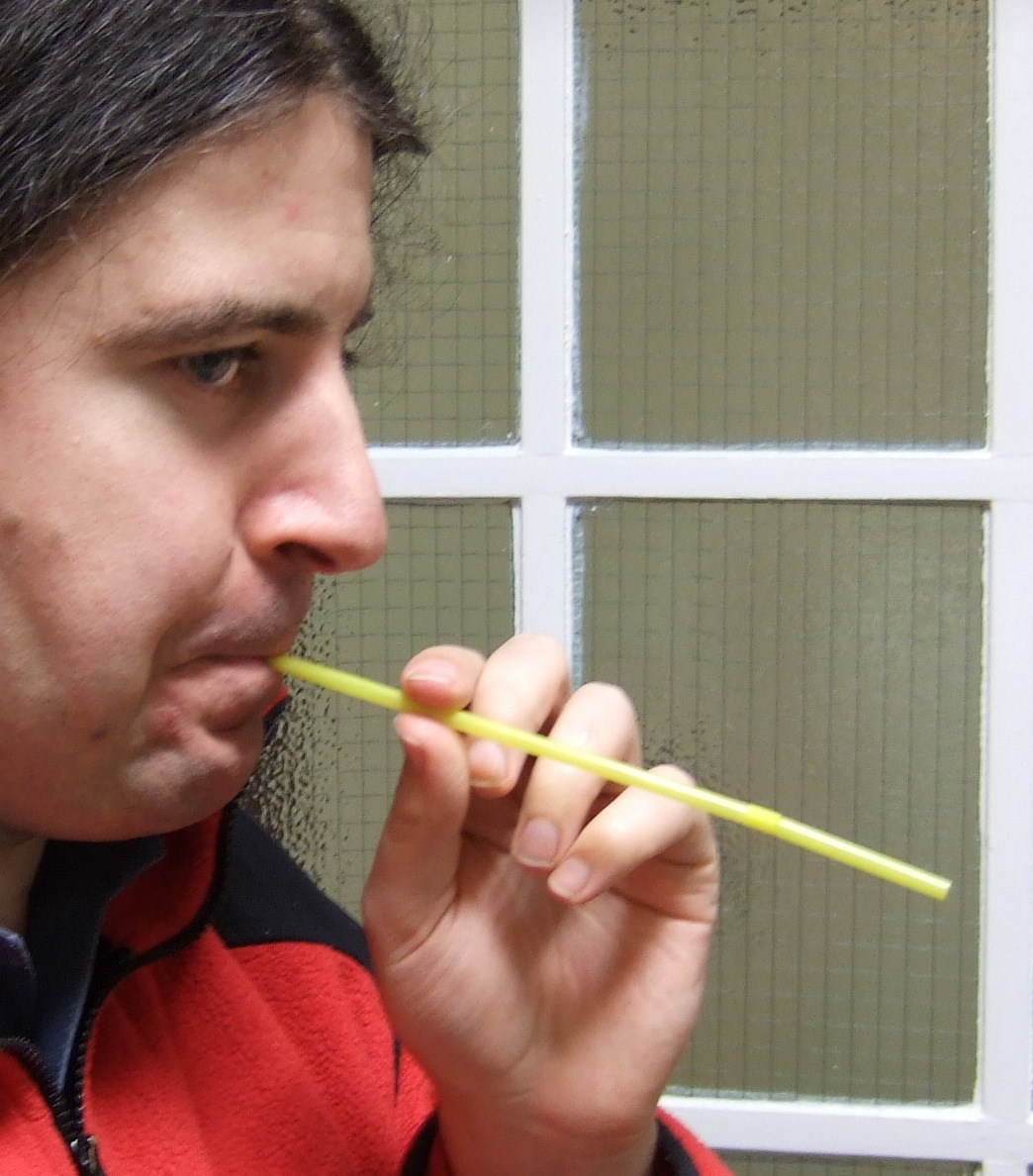Ingredients
 |  |
| At least one drinking straw | A pair of scissors |
Instructions
Take the straw and flatten the end 2-3cm making some sharp creases in the side.
 Cut the end of the straw into a triangle shape about 1.5cm long.
Cut the end of the straw into a triangle shape about 1.5cm long.
Put the triangle shape into your mouth and blow, there is a technique to getting a sound out, you want to put your lips just beyond the triangle, and squash the straw gently with your lips.
Try cutting bits of straw off using the scissors while you are blowing. What effect does this have on the noise?
Result
 You should hear a somewhat unpleasant buzzing noise as you blow.
You should hear a somewhat unpleasant buzzing noise as you blow.
As you cut bits off the straw it will get higher pitched.Listen to the harmonious sound of the straw oboe being shortened by cutting bits off
You may also notice that if you move your mouth along the straw a bit you can get different notes, and tf you accidently touch the triangle with your teeth you can make a really high pitched squeak.
Explanation
The two triangular pieces of straw behave very like reeds in woodwind instruments such as oboes or saxophones. When you blow through the straw the between the two reeds is moving very fast. The only way for air to speed up is to move from an area of high pressure to one of low pressure, so the pressure between the reeds must be lower than in your mouth. This means that the high pressure air outside the reeds will push them together closing them off.
 |
| As you blow through the straw, the air between the reeds is at a low pressure which means the reeds move together. |
 |
| As the reeds are pushed together they close off the airway so the air stops. Now the reeds can spring open again. This opening and shutting leads to the air leaving the reeds in a series of puffs. |
Now the air can't flow so the pressure inside the reeds increases allowing them to spring open again. Now the air can flow through the straw again. This means that the air flows in a series of tiny puffs 50-100 times a second, which vibrate the rest of the air which you hear as sound.
Why does the pitch change as you cut bits off?
The reed starts and stops the flow of air very sharply which produces a mixture of a huge number of different pitches of sound. This sound is then fed into the straw, and travels up and down the straw reflecting off both ends a bit like water sloshing up and down a bath. Some pitches such as the one with a wavelength the same as the length of the tube will be strengthened by this process.
And others will become weaker as the reflections counteract the vibrations produced by the reed
The shorter the tube, the shorter the wavelength and so the higher the pitch of the vibrations that get amplified by the tube so the higher the pitch of the sound you can hear
Why can I change the note my moving my mouth?
The other way you can change the pitch of the sound is to affect the speed of the opening and closing of the reeds. By moving your mouth nearer to the end or touching them with your teeth you can make them behave as if they were shorter, this means they are less heavy so vibrate faster giving a higher note.
- Previous Make an Infrared Camera
- Next Levitating plastic bags










Comments
Add a comment